Have you ever wanted to grow Parsley, but didn’t know where to start?
Are you unsure if you can even grow Parsley in your climate?
Or are you unsure whether you should grow it in the ground, a raised garden bed, in pots, or even indoors?
[toc]
After countless hours researching, growing 3 types of parsley and observing local gardeners and farmers’ growing technique I have created How to Grow Parsley: 12 QUICK Tips.
This article will provide you with an easy guide on how to grow parsley, what the best types of parsley are to grow, and the best ways to care and harvest your parsley.
Grow These 3 Types of Parsley (Tip #1)
Are you interested in using parsley in soup or salad? What about as a garnish? Or even to add flavor to meat and poultry dishes?
Parsley has many uses, all of which are beneficial to your health and can add great flavor to your dishes.
But if you want to have the best success with using Parsley then you need to understand the three types of parsley you can use.
I recommend growing the below types of parsley:
1. Curled Leaf Parsley (Common)
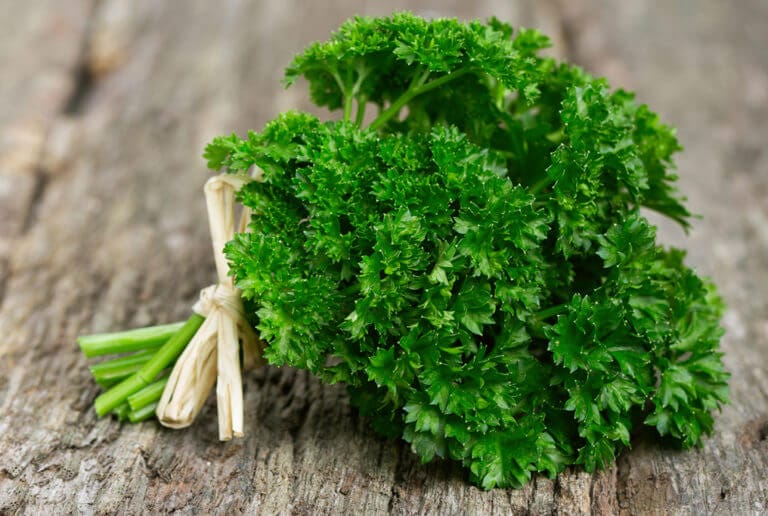
Curled Leaf Parsley, also known as Common Parsley is the most popular type in the entire world.
Types of Curled Leaf Parsley include Decorator, Forest-Green, Pagoda, and Fand Frisca.
This type of Parsley can be used as a garnish, dried for stews, soups, and can be used in other dishes.
It is also a great heat-tolerant herb that thrives better in shade.
2. Flat Leaf Parsley (Italian)
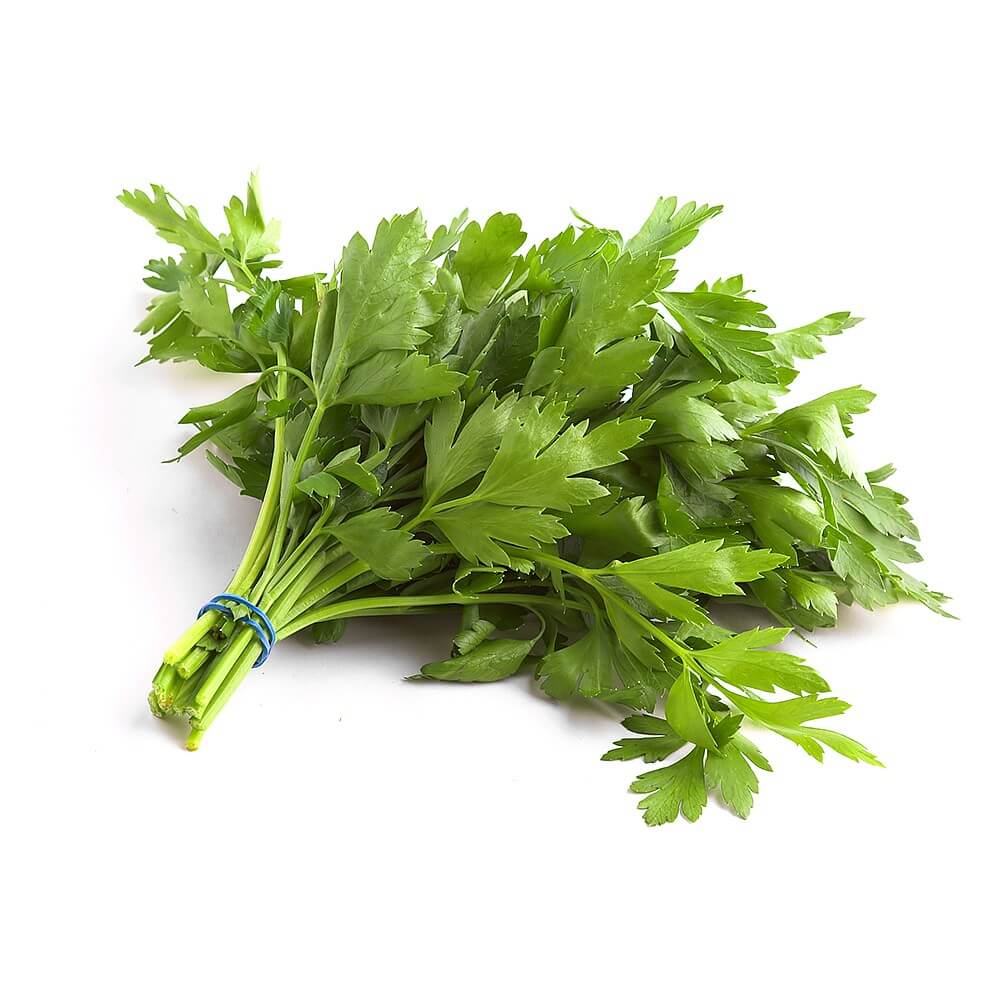
Flat Leaf Parsley, also known as Italian Parsley is another incredibly popular type.
Types of Flat Leaf Parsley include Gigante, Catalogno, Italian Dark Green, and Italian Plain Leaf.
This type of parsley is great for soups, salads, stews, and sauces. And it has much more flavor than Curled Leaf or Hamburg Parsley.
Plant this type of Parsley in cool, shaded areas.
3. Hamburg Parsley (Turnip)
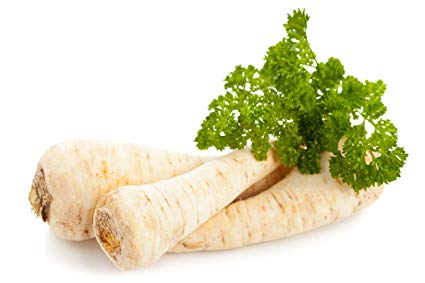
Hamburg Parsley, also known as a Turnip root parsley is a lesser-used type in most regions of the world.
This type of parsley doesn’t use the leaves, but rather than 6-8 inches of root.
Hamburg Parsley can be used in roasted, fried, or chopped into soup or stew.
Purchase Parsley Supplies (Tip #2-5)
If you want the best success when learning how to grow parsley then you will want to buy the best gardening tools possible.
Below, are several gardening tools that I recommend to help you increase the likelihood of success.
Buy THESE type of seeds (Tip #2)
When growing parsley you will have the option to buy a parsley plant or use seeds.
Regardless of what route you decide to go, I recommend buying them on Amazon for the best variety, price, and quickest shipping.
While searching for parsley plants or seed you’ll notice them being marketed in numerous ways.
As a general rule, most non-commercial buyers like you and me cannot buy GMO seeds.
This means you should not pay more for a non-gmo seed nor worry about health effects from the seeds you buy.
Not only this, but there is no such thing as an organic parsley seed or plant.
This is a marketing scheme to increase the price of the seeds or plant you buy.
When learning how to grow parsley I recommend purchasing traditional seeds or parsley plants. These are typically the easiest to grow with the best results.
Heirloom seeds and plants are another great option, but typically are harder to grow and sometimes yield less results.
This is because more heirloom herbs do not have the heat-tolerance and disease and pest resistance as traditional plants and seeds.
Buy Containers, hanging baskets, or a Raised Garden Bed (Tip #3)
Once you have your parsley plant or seeds you now must decide where you want to plant them.
The good news is that Parsley can be grown almost anywhere.
You can grow it indoors, in gardens, in raised garden beds, hanging baskets, and gardening containers.
My recommendation is to plant Parsley in raised garden beds or gardening containers.
If you are going to plant your parsley in a container then I recommend purchasing Peat Pots.
Peat Pots are a great way to start seed or small Parsley plants.
Soon they will outgrow these pots though and you should transplant them into a larger container, such as the Viagrow 5 Gallon Nursery Pot.
And if you want to then transplant your Parsley into a raised garden or directly sow seeds into a raised garden bed then I recommend using a kit, such as the Cedar Raised Garden Bed.
If you want to learn more about the Best Raised Garden Beds and how to properly use them then read 20 Best Raised Garden Beds for ALL Plants.
Buy the Proper Garden Tools (Tip #4)
Having Parsley seeds or plants and a place to plant them is essentially all you need.
But if you want to make your gardening easier and more successful then you’ll want to have the proper garden tools.
If you plan on starting your parsley from seed then you’ll want to have a container, seed, and a few more tools.
First, I recommend buying a water bottle, such as the Tolco Spray Bottle to help correctly water your seeds.
You’ll also want some basic gardening tools like a hand shovel, pruning shears, and gardening gloves.
For the best price for the most garden tools, I recommend buying the Vremi 9 piece Garden Tool Set.
The Vremi 9 piece Garden Tool Set will also help you with planting your Parsley in a garden, raised garden bed, and even a hanging basket.
Also, if you plan on growing your seed indoors then you will need a grow light like the Hydrofarm Grow Light if you do not have access to at least 8 hours of sunlight.
And finally, if you need a good hose to water your parsley outside then I recommend reading 10 BEST Garden Hoses to learn what will meet your specific needs.
Buy Garden Soil & Fertilizer (Tip #5)
While you will typically not have any problems planting your seed into the soil or transplanting your Parsley into your garden sometimes a little help can’t hurt.
If you plan on growing parsley from seed then I recommend buying a good potting mix like the Miracle-Gro Potting Mix to provide your seed and soon-to-be plant with the nutrients it needs.
Not only is this soil good for growing parsley from seed, but it can also be used if you keep your plant in a hanging basket or container.
And if you plan on taking a parsley plant and planting it directly into a raised garden bed or traditional garden then you may want to use Miracle-Gro Plant Food to help it grow.
Why I like adding fertilizer to Parsley is because it provides everything your plant needs. Sometimes soil lacks the nutrients needed for herbs like Parsley.
This fertilizer will ensure your plant grows healthy, quick, and to the best of its ability.
How to Start Parsley from Seed Indoors (Tip #6)
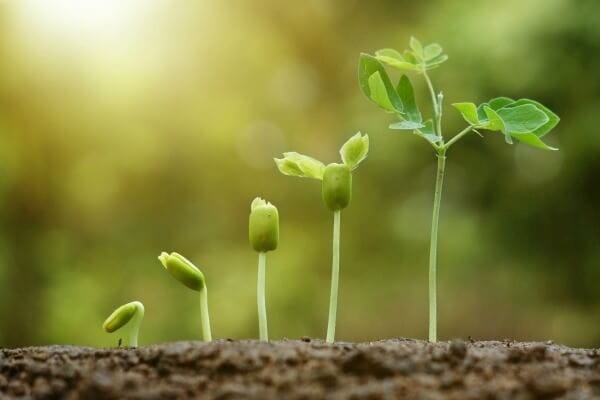
If you decide you would like to grow Parsley from seed indoors then there are several important steps you’ll want to take to ensure success.
Step 1:
First, plant your parsley seeds inside approximately 8 weeks before your last spring frost or from the time you will transplant them outside.
You will want to start by filling your 3-inch container about 80% full of the Miracle-Gro potting mix.
You will then want to spray your soil about 10 times until it is a dark color or feels damp to the touch. Never soak the soil like you would with your garden.
Next, use the tip of a pencil to form a tiny hole about 1/8 inch deep. 1/8 inch is the size of a pencil or pen tip. If it is a little bigger that is fine, it won’t harm your seed.
Then place 3 seeds into the hole and move the soil over the seed.
Spray the soil again 10 times.
Step 2
After planting your seeds place them in either an area of the house that receives at least 8 hours of sunlight or a grow light.
When placing your growing pot under a grow light keep it approximately 4 inches from the bulb.
If the seeds are closer than 4 inches to the light they may quickly dry out and die.
And if they are further than 4 inches from the light they may not receive enough light and heat to sprout and grow.
It should also be noted that Parsley seeds thrive in temperature between 70 and 75 degrees Fahrenheit.
If you do not think they will stay at this temperature indoors then add a Plant Heating Mat to keep the temperature consistent.
Step 3
For the next 4 weeks, you will want to consistently spray your parsley seed.
You will want to spray your pot 2 times a day. Usually, this is in the morning and evening, but sometimes an afternoon spray may be needed.
Spray the soil until it turns a dark color and feels damp to the touch as you did in step 1.
In approximately 2 weeks, your seed should turn into a small Parsley plant.
Step 4
From about 4 weeks from the time you planted your parsley seeds your plant should now be about 3-4 inches tall.
At this point, you will want to transplant them into a larger gardening container for another 4 weeks.
Like step 3, you will want to continue to water your plant twice a day.
Spray 10 times until the soil becomes dark and damp to the touch.
Step 5
After 8 weeks from your initial seed planting, you can finally move your plant outside. If you are planting your parsley in a raised garden bed or in a garden make sure the last frost has occurred.
You can find out the historical date of your last frost here.
When transplanting your parsley plant into a garden, hanging basket, or raised garden bed you will want to dig a hole that is the size of your parsley plant root ball.
The plant root ball is where the roots meet the soil.
Next, cover your parsley with soil and water for 30 seconds.
Unlike vegetables, you will not need to thin your Parsley plant.
Having two to three Parsley plants growing in a container or in a raised garden bed will give you the best harvest possible.
If you want to watch someone planting parsley then I recommend reviewing the below video:
How to Plant Parsley In a Garden (Tip #7)
If the last frost has occurred and you wish to use Parsley plants instead of seeds then you can plant it into your garden or raised garden bed.
To plant your Parsley you will want to dig a hole twice the size of the pot your Parsley is in. This should be about 6 inches wide and 6 inches deep.
You will then remove the Parsley from the pot by tipping it upside down, pinch the soil and slowly remove it from the pot.
Place the plant into the soil and then cover it up to the base of the plant. The base of the plant is where the parsley meets the soil.
Never cover the Parsley leaves.
Once you have planted your Parsley I recommend watering it for 15 seconds.
Continue watering your Parsley once a day for 15 to 30 seconds until you are ready to harvest it.
How to Grow More Parsley (Tip #8)
All three types of Parsley should bare you plenty of leaves throughout spring, summer, and fall depending on where you live.
But if you want even more Parsley then I recommend taking advantage of a little known, but beneficial fact.
To grow better and more Parsley plant it next to tomatoes, chives, carrots, corn, peppers, onions, peas, and even roses bushes.
This is called combined planting and allows both Parsley and the plant you place it next to produce healthier and more.
And if you are struggling to grow Asparagus then plant Parsley next to it. Asparagus is most benefited by Parsley.
Do not plant your Parsley by lettuce or mint though. These two plants will limit the growth and health or your Parsley plant.
How to Care for Parsley (Tip #9)
Parsley is one of the easiest herbs to care for.
With that being said there are still simple steps you should take to ensure your Parsley is as healthy as possible.
The most important caring tip you should take advantage of is preventing Parsley from Bolting, also known as going to seed.
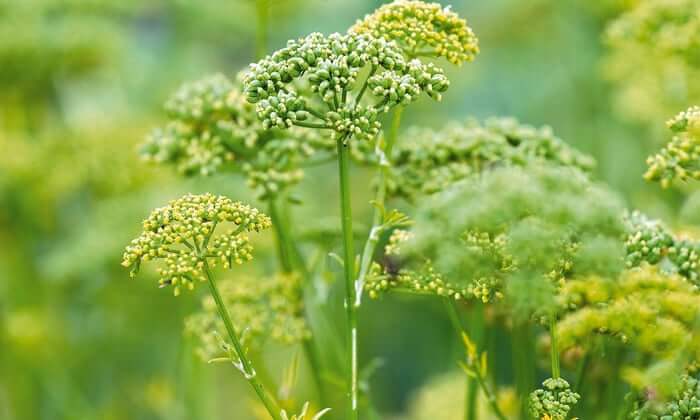
Bolting is when your parsley rapidly grows and then flowers. At this point your Parsley is useless.
To prevent this you will want to:
- Plant your Parsley in Early Spring
- Keep it in a cool and shaded area. And if temperatures quickly rise, water it twice a day instead of once.
- And most importantly harvest early and often to promote edible growth.
Not only this, but there are also several other tips you can take advantage of:
- Water. Water your Parsley at least once a day. If it looks like it is wilting you may have to transplant it to a cool shaded area.
- Fertilize. Although you don’t need to fertilize, adding a simple fertilizer in early summer can help promote more and healthier growth.
- Do not use insecticide or fungicide. Unlike other plants that get infected by pests, Parsley is extremely hardy. This herb attracts butterflies and hoverflies that will eat aphids, thrips, and other insects that normally infest plants.
How to Harvest Parsley (Tip #10)
Parsley is one of the easiest plants to harvest. By the time you need to harvest your Parsley the hardest work is done.
All you need to harvest your Parsley is to cut where the stem meets the ground.
While you can cut anywhere without hurting the plant, this will promote the best plant growth.
The only difference is if you are harvesting Hamburg Parsley. Then you will want to make a large dig under the plant so that you pull up the usable root.
If you want a tutorial on how to harvest Parsley then please watch the video below:
How to Store Parsley (Tip #11)
Because Parsley plants produce so many leaves you sometimes will have more than you know what to do with.
Because of this and its short shelf life, it is important to properly store it.
Parsley will hold its leaf firmness for about 48 hours. After this, you will want to properly store it.
If you want parsley to last for several weeks then you will want to wrap a dampen towel around the leaves. Then place it in a zip-lock bag.
If you want it to last longer you can freeze it.
It should be noted though that when Parsley thaws the leaves will not be firm and may even break apart. Nonetheless, this is a great way to keep Parsley for longer periods.
And finally, you can dry Parsley.
Learn how to ground Parsley in the video below:
Best Parsley Uses (Tip #12)
Because of Parsley’s flavorful taste, it can be used in many dishes.
Most likely you have had it in some type of dish this year without even knowing.
Today Parsley is used in dishes like soup, salads, stews, taboule, and so much more.
Some of my favorite dishes with Parsley include:
- Spaghetti with Parsley Pesto
- Zucchini Noodle Salad with Parsley Pesto
- Tabbouleh
- Italian Gremolata
- Cauliflower with Lemon and Parsley
- Frittata
- Couscous Salad
Conclusion
After reading this article you should now know How to Grow Parsley both from seed and an existing plant.
If you want to have the best Parsley this year then I recommend using 12 SIMPLE Tips:
- Use Italian, Common, or Hamburg Parsley
- Use Heirloom or traditional seed
- Plant in hanging baskets, small pots, raised garden beds, or even a traditional garden for your Parsley
- Make sure to have garden tools like gardening gloves, a hand shovel, and a bottle sprayer
- Use Potting Mix if you plan on keeping your Parsley in a container and use fertilizer in early spring to promote healthy plant growth
- Use 5 Simple Steps to Start your Parsley Seed indoors
- Planting Parsley plants outside is even easier. Just dig a hole, put your plant in it, and water once a day
- Plant your Parsley next to plants like tomatoes, asparagus, etc. to grow more and healthier parsley.
- The most important tip for Parsley care is to make sure it does not bolt.
- Harvest your Parsley early and often for best results and more plant growth.
- Parsley does not keep long. Make sure you store it in the fridge, freezer, or even dry it.
- Finally, there are numerous ways to use Parsley. Half the fun is trying it in new recipes.
If you enjoyed this article then I recommend reading: